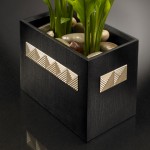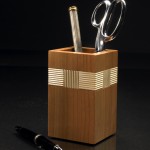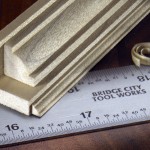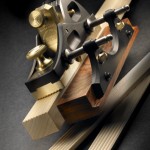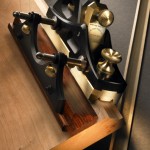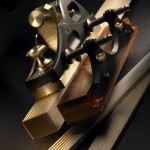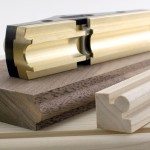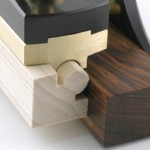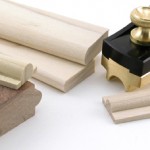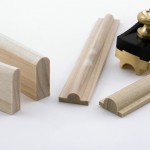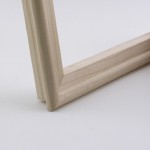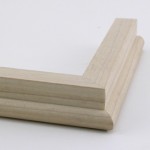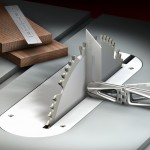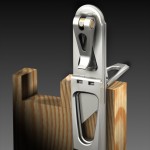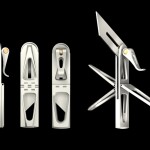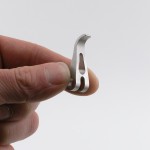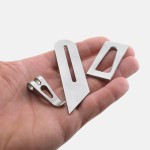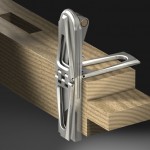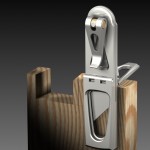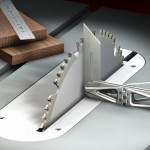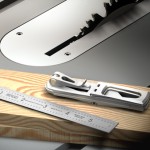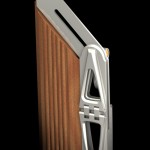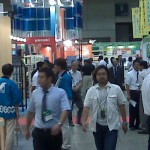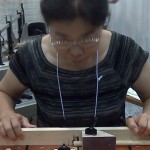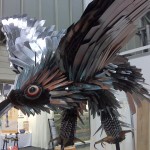Today (Tuesday, Dec 2, 2008) we are unleashing the Economaki Economic Stimulus Plan for Woodworkers who HATE Sanding–EESPWHS (pronounced “Holy Cow!)
This plan is based on the fact that the really cool tools sitting in our warehouse are doing you no good. Actually, they are not doing us any good either–a classic lose/lose proposition.
Our Plan to Eliminate Sanding for the Holidays!
Starting today, when you purchase 3 HP-6 sole/iron kits at the regular price, add two more for FREE! (Equal or lesser value, of course).
But wait–there’s more… When you purchase 4 HP-6 sole/iron kits at the regular price, add three more for FREE! (same rules as above)
But it gets better… When you purchase 5 HP-6 sole/iron kits at the regular price, add FOUR more for FREE! (same rule again).
We’re not done… If you buy 10 HP-6 sole/iron kits at the regular price, add NINE more for FREE! This is not a typo!
NOW FOR THE FINE PRINT: As you now know, the free items you select must be of equal or lesser value and all selections are limited to stock on hand (no back orders). The two newest sole/iron kits (1/2 & 3/8″ Face Bead kits) are excluded. Other than that, this is an awesome deal. Be prepared with a couple of alternate ideas–or better yet, call early. The Economaki Economic Stimulus Plan for Woodworkers Who Hate Sanding EXPIRES ON DECEMBER 9th.
IMPORTANT NOTE: This is a phone order sale only (our new website has some goofy limitations). This means one of the smiling faces I get to see every day will gladly take your order. Patience please if you are placed in a queue–it will be worth it. 1-800-253-3332. OR, you can email us (sales@bridgecitytools.com) your order if we already have your address and current payment info on file (do not email credit card information).
There is yet another cost savings to mention! These items should arrive in time for you to make a couple of gallery-quality holiday gifts–did we mention no sanding?
Below are a couple of ideas and a few pics to start you dreaming…
Have fun–
John
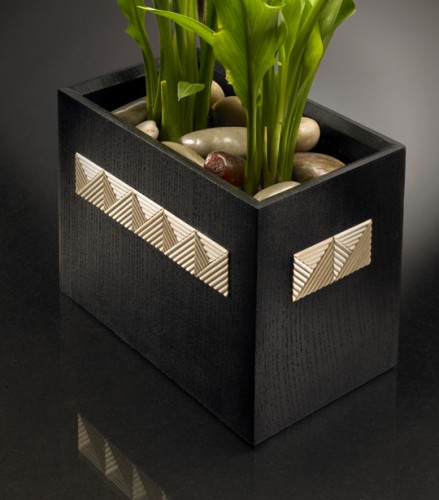
The planter box above can be made in an afternoon. We ebonized the ash and then infilled the pockets on each side with cut moldings. It is simple and beautiful.
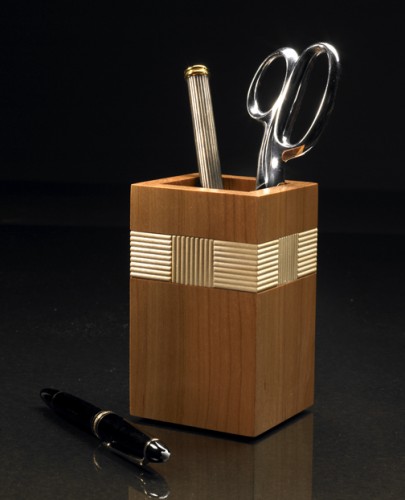
This pencil box is a variation on a theme. An entire desk accessory system can be made with this simple theme.

Almost every single profile for the HP6 can be used for frames. Here are two simple versions that demonstrate the power of texture. Frames are not limited to pictures – boxes and cases can benefit from texture, too!
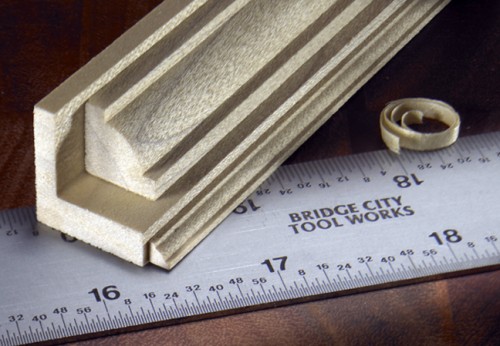
The modular design of all the HP6 sole/iron kits allows for structured nesting opportunities. Here you can see the incredible detail you can add to your projects.
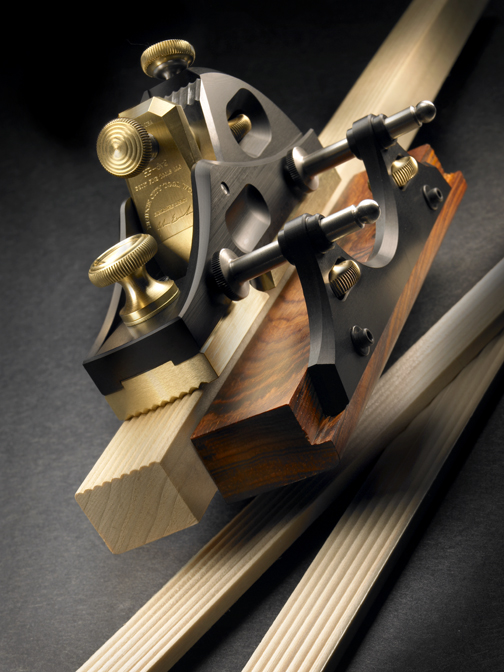
Never underestimate the power of no sanding. Can you imagine sanding this multi-bead profile? We can’t. And our profiled aluminum “stones” allow you to put a factory edge on any of the profiled irons in a matter of minutes–sharpening has never been easier.
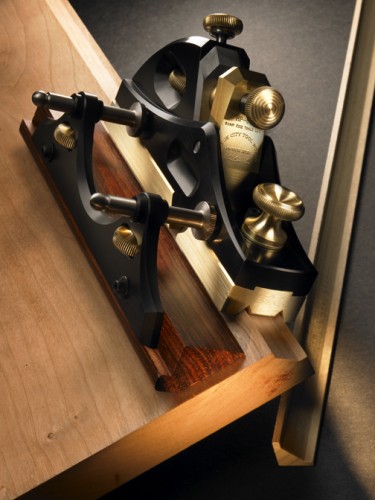
Without question, the HP-6v2 is the most versatile tool in our stable of heirloom products. It is also a significant percentage of our overall business–but more important is the fun you will have creating ideas that are uniquely you!
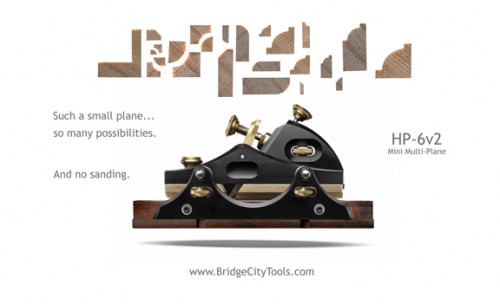
Behind the Scenes
Behind the scenes at Bridge City Tool Works!
Woodworking in America Recap
November, 17th, 2008
The fine folks at Popular Woodworking should be all smiles today as they reflect back on their efforts over the past six months–Woodworking in America appeared on all accounts to be a smash success.
I was involved in three sessions (and one repeat); Modern Tools, Tolerances and Myths (x2), How Modern Tools are Designed and Made and Furniture Design. As briefly as I am capable, summaries follow.
The Tolerance and Myths sessions was a forum that included Tom Lie-Nielson (Lie-Nielson Toolworks), Konrad Sauer (Sauer and Steiner Planes), and Robin Lee (Lee Valley Tools) and myself. The first edition was moderated by Chris Schwarz and the second by Steve Shanesy (publisher of Popular Woodworking).
The attendees appeared very interested in the processes, techniques and philosophies from a tool maker’s perspective. Most of the session was spent on how flat a plane sole should be to yield optimal results and other quantifiable measurements. It was the consensus of the panel that woodworkers overly fret about such details and it was suggested by one panel member (guess who) that perhaps it would be a better use of one’s time to fret over the appearance of one’s project, which is after all the reason to call oneself a woodworker.
In the second session there was a comment made by an attendee that I felt could not go unchallenged regarding the $1100 price of the Jointmaker Pro. Its very existence was questioned and it appeared to be a waste of money to this gentleman.
I probably appeared to be a bit torqued but I suggested that a broader, less judgmental attitude might be enlightening–why not ask this question to the schools for the blind who are buying the Jointmaker Pro? Or those power challenged areas in Guatemala and India who will be receiving saws next month? Or the customers who can no longer hold a hand saw steady? Or those who are interested in gallery-quality cuts without power or the need for dust collectors? One thing about woodworkers–there is no shortage of self-righteous opinions. I have always felt there is a time and place for judgment–the time is on Sundays and the place is church… woodworking is just too much fun to be plagued by singular viewpoints.
I am pleased to share that this gentleman sought me out afterward and sincerely apologized for his question. We had a brief discussion about the filters we humans use that sometimes lead to nasty cases of myopia. His apology was not necessary–I thanked him for sharing his views and we parted ways with good feelings.
I was deeply moved by the sincerity of one attendee who inquired why his choice of technique (hand vs power tools) was judged so harshly by internet forum participants. He was fairly new to the craft and was visibly disturbed by the judgment he encountered from inquiries in forums. The panel was unanimous in suggesting that whatever works best for you is all you should be concerned about.
You know, I have joked about the attitude on forums and coined the most fervent and vocal opinionists as the “Woodworking Taliban”–this gentleman’s plea for a more user friendly place was a voice I hope was heard by many who participate in these internet venues.
The session on How Tools are Made featured the same toolmakers as above and also was moderated by Steve Shanesy. This session was lively, the questions and dialog superb and likely could have continued for another couple of hours. The banter amongst the toolmakers was lighthearted and spirited (we all have much more in common than differences) and was very engaging. I had much fun in this session and felt like we adjourned way too soon.
The last session of the conference was on furniture design featuring Kevin Drake from Glen-Drake Toolworks and John Economaki (that would be me).
Kevin opened the session with a well-prepared overview of the hierarchy of design and used Japanese art to bring awareness of how the eye sees and how the artist manipulates this process using the fundamental design principles of proportion, scale, harmony and balance. I followed with a more informal approach introducing the concept of meaningful work–work worthy of the space it occupies. I suggested that design always reflects the values of “our time” and that perhaps the focus on furniture from the late 1850’s through the early 1900’s by woodworking magazines was limiting our understanding of ourselves.
It was hard for me to read how well this was received and I am open to critique if you or anybody you know attended this session (john@bridgecitytools.com). I have for many years felt the obsession with technique was keeping us from exploring our creative gifts as makers. I am deeply passionate about improving our visual surroundings by increasing awareness and sensitivity to beauty in our efforts.
The marketplace ebbed and flowed with the timing of the sessions. While I was away in sessions, Michael Berg manned our booth. We had a steady stream of traffic both days and I think it is safe to say that many people who came to see the Jointmaker Pro work left impressed. Clearly if we can find a way to make this tool available for around $500 it would likely be one of the most popular tools available. For those who are still skeptics–just wait.
The CT-15 Multi-Square was a smash hit. This tool really resonated with just about everyone who had a chance to hold it. This may be one case where our decision to make it once is short sighted.
The new Centerscribe was also a popular tool–after we explained its many uses. Next week we will introduce a movie showing this tool in action that should be fun to watch.
I heard great things about all of the other sessions and several sounded like they should have been videotaped and sold as comedy pilots to the major networks.
It would not surprise me if Chris Schwarz is in the hospital as I write. This guy never quits moving until he is backed into a corner where he graciously answers every question–and it appeared all 400 attendees had at least a couple.
Of course a show like this would not be complete without a chance to unwind. Now here’s the problem with going to dinner with Tom Lie-Nielson and his staff–I always wake up the next morning with a headache, and it is not from what you think 99% of the time. I don’t know how many times we have done this, but the laughter is off the charts and the dinners always memorable. I wish I could repeat a couple of the jokes here…
So to Steve, Chris, Linda, Megan, Rober, Glen and all who I have left out, THANK YOU for making Woodworking in America possible–let’s do it again!
–John
Cool New HP6v2 Profiles!
November, 4th, 2008
The sole/iron kits we are introducing this week for the HP6v2 Mini Multi-Plane may be the most versatile in the family. The pictures below tell most of the story…
These options allow you to cut a half bead on an edge or a 3/4 bead on a corner. In addition, either will do a full bull nose on either 1/2″ or 3/8″ thick stock.
The results are razor crisp. This detail is used in moldings, box making, frames, drawer details and a host of other projects when a sudden urge to deviate from 90 degree corners comes upon you…
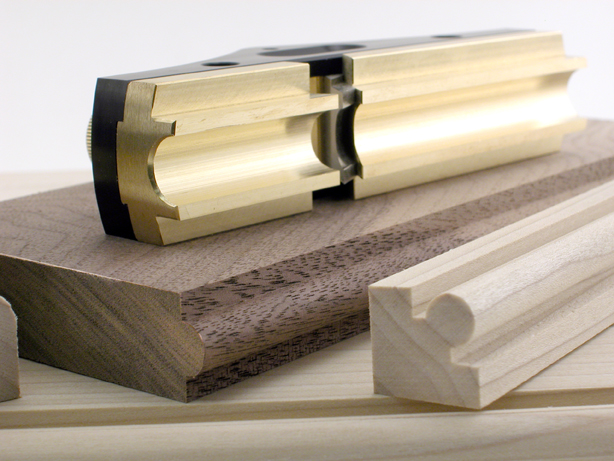
Here you can see a full 1/2 bead and a 3/4 bead. The 3/4 bead will be fully exposed once I cut the cheeks off.
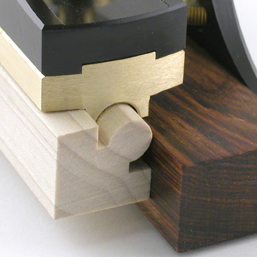
This image shows how the bead is formed on adjacent faces. Using the fence is a must for this profile.
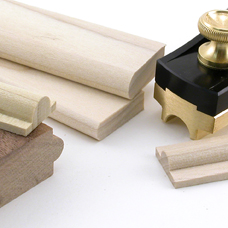
Here you can see half beads and bull nose cuts. This is a great addition to your shop if you make boxes or frames.
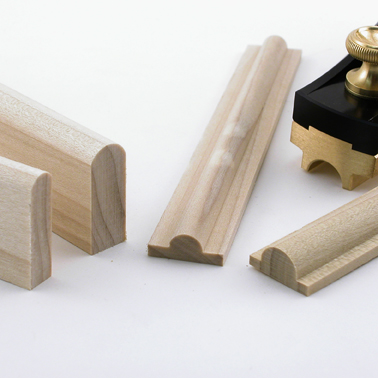
I don’t know about you, but I get excited to add form and texture to my designs, and I really get excited when it can be done without sanding!
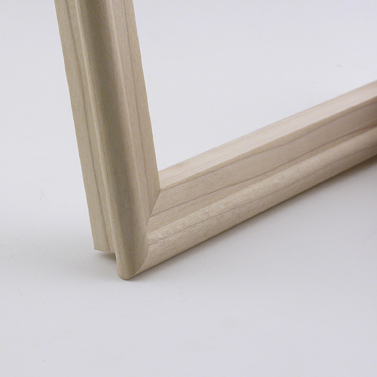
The 3/4 bead is an awesome detail not easily replicable with a screaming router. This is the same piece of wood in the first image after the bead was completely liberated with a shoulder plane. It is a rich detail.
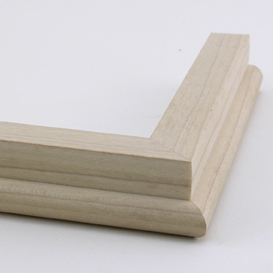
Here is the same miter joint from the opposite face. I don’t think we have an HP6v2 profile with as many different options from the same sole/iron kit as these two new face bead kits.
These have not been posted to our website as of this writing, but they are in stock and you should be able to order them before the end of this week.
–John
The CT-15 is Coming Together!
October, 9th, 2008
The best part of my job is when components of a new tool arrive for first article inspection–and in this case it is really a big deal because the parts on my desk today are for Commemorative Tool #15, our limited edition multi-square.
As mentioned earlier, I have developed a fetish for stainless steel. It is tough, durable and likely will not rust (all stainless steels will rust under the right conditions–as dumb as that sounds.)
Over the past couple of weeks we have been testing various bead-blasted finishes and have settled on a matte finish that feels just plain sexy. Below are a couple of pics of some parts–the t-bevel lock lever/pocket clip is really cool.
–John
PS: I have actually gone two days in a row without making Squiggle Wood. I think I need help.
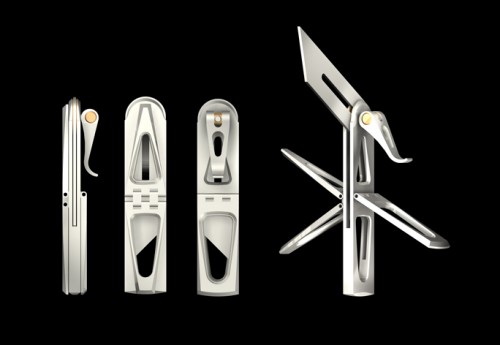
The image above is a computer rendering of the CT-15 Multi-Square, it is five layout tools that fit in your apron pocket.
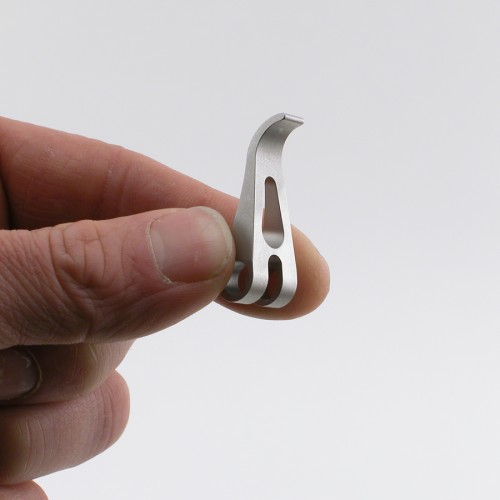
The finish and form of this cam lock/clip is really cool!
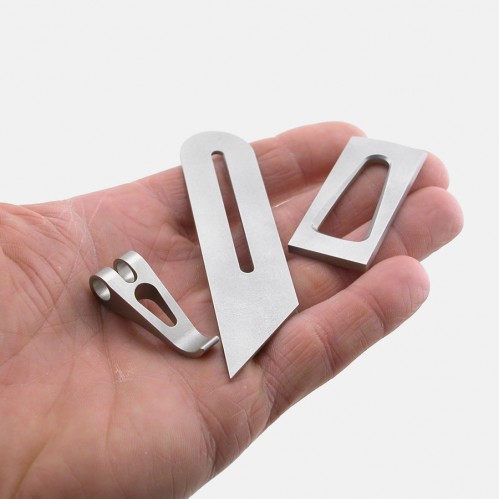
When this tool is completely assembled it is really going to be fun to use.
News from the Sticks and Stones Will Break Bones but Words are Worse department: We used Michael as a hand model because I was informed by my staff that my hands are not as photogenic as my knees or elbows.
Nobody Has Ever Seen Wood Like This…
September, 16th, 2008
Last week I shared our latest Jointmaker Pro discovery; Squiggle Wood. Check out one afternoon’s experiments–wood is just not supposed to act this way. By the way, this is European beech. Oak and ash work too.
It’s hard to imagine woodworking being more fun…let me know your thoughts!
–John
YouTube Link: http://www.youtube.com/watch?v=eq8O3uUilM8&fmt=18
YouTube Link: http://www.youtube.com/watch?v=eq8O3uUilM8&fmt=18
Brain Damage = Squiggle Wood
September, 10th, 2008
Every now and then I get a great idea–as in the time I threw a rock in the air and watched it come down right between my eyes. (My ability to concentrate is off the charts…) As my Mom was mopping the blood off my face she peppered me with the exact same question as the day before, and the day before that…
“When are you going to start using your head?”
“I did use my head–to get in the way of the rock.” And I was serious.
Fortunately, the only lesson I learned is that head wounds are messy, as in two towels messy. Oh, and rocks are hard.
So, what’s my point? (thanks for asking)–I am convinced that without that head wound fifty years ago I would have never discovered Squiggle Wood.
The video clip below is from a longer video we will post later this week. The wood is American beech, 1″ wide and just under 1/2″ thick. The cuts took about ten minutes on the Jointmaker Pro.
Before you start asking dumb questions, such as, “What good is that?” I suggest you consider going outside to toss a rock in the air… the long-term results are simply amazing.
More on Squiggle Wood later.
–John
“>
Commemorative Tool #15; The Back Story
September, 3rd, 2008
Each year I get to pull out the stops and create a tool we pledge to never make again. The introduction is the highlight of our year and I am pleased to offer a sneak peek to those that follow this blog.
This year I had three choices for the 2007 Commemorative Tool and picked the one that interested me the most. In addition, I am going through a stainless steel phetish (that is a cross between phase and fetish–works for me since I made it up…) after a 25 year romance with brass. This tool sings in stainless steel.
What if you could carry all of your layout tools in the breast pocket of your apron?
The pics are self-explanatory. Prices and availability will be posted on our website sometime next week. (Under $300 and will be available by the holidays).
Guess I better start on the 2008 Commemorative Tool…
–John
PS: Let me know what you think!
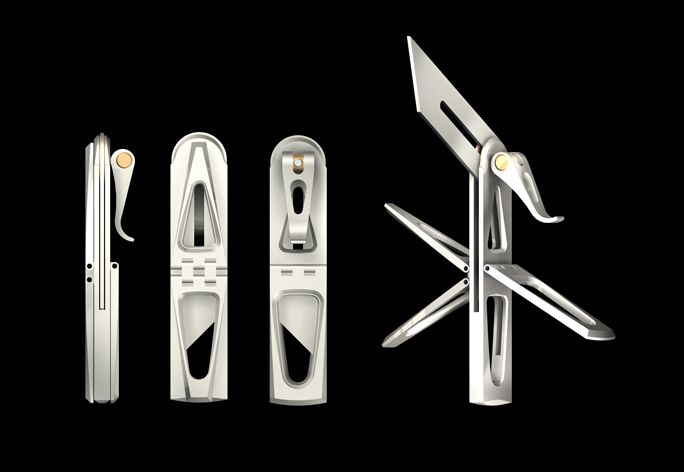
This is the CT-15 Multi-Square and consists of a 90 degree Saddle Square, 8:1 Dovetail Square, 6:1 Dovetail Square and the tightest locking T-Bevel you have ever owned. Cam lock also serves as a pocket clip. I spent over a month working on the lines of this tool. The variable length chamfers are an elegant functional detail (pocket friendly) that not only invites use, but is food for the eyes.
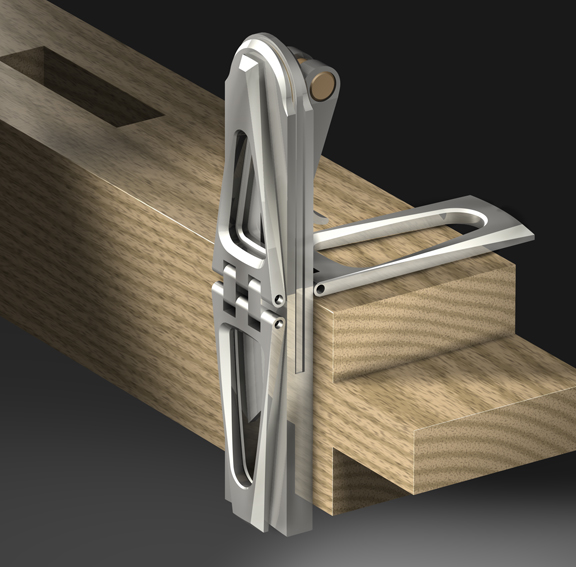
We invented the Saddle Square years ago and this one is our best. Adjacent lines are perfect–used here for a tenon on 8/4 stock.
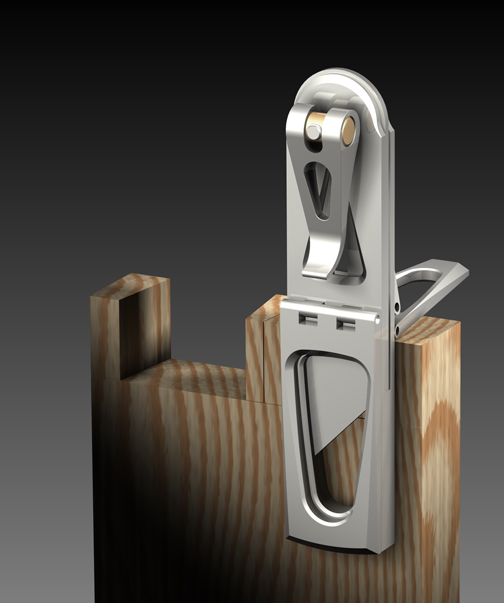
The layout of dovetails is fast and accurate with either of the two dovetail squares built into the CT-15 Multi-Square.
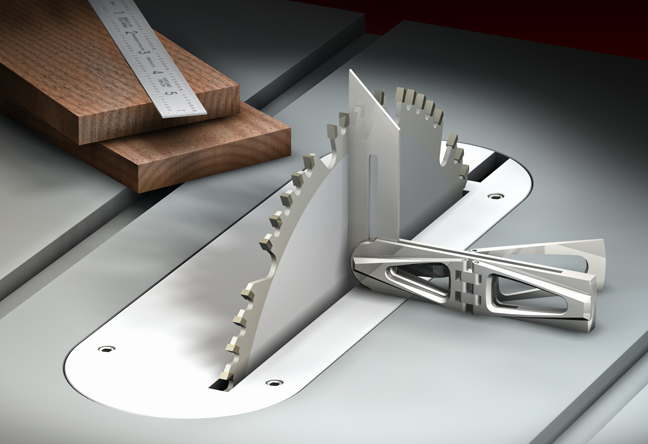
Using the CT-15 as a try square is easy. Notice how the saddle square can be used as a kick stand–this is cool.
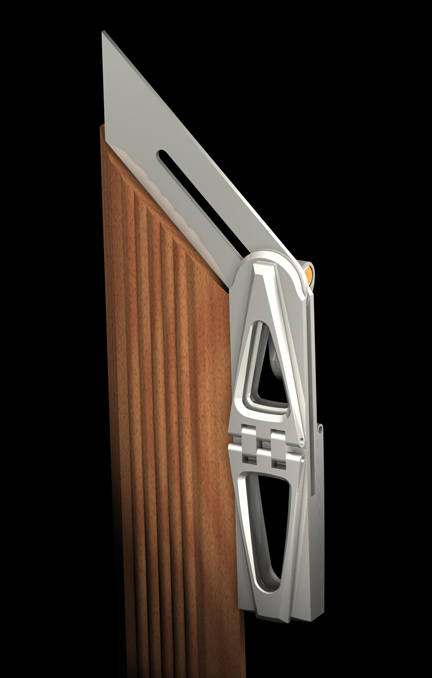
The tightening mechanism for the t-bevel is field adjustable and rock solid.
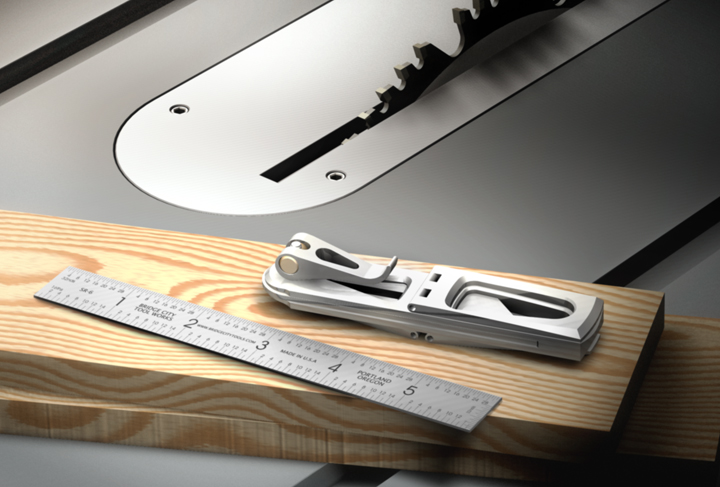
The CT-15 is just over 4″ in length and approximately 1/2″ thick. It is milled from solid stainless steel and is made like a fine pocket knife. We are only going to make this version this once.
Copyright 2008, Fine Tools, LLC All Rights Reserved.
Atlanta and Japan JMP Summary…
September, 2nd, 2008
I could only work half the day today as I have a major case of jet lag… To give you an idea how tired I am, I came home too tired to sleep and almost watched C-Span. Still can’t believe there is a C-Span II.
The attendance in Atlanta was spotty, I am not sure about the value of big trade shows anymore…my local connection of friends suggested it was a poor show for sales.
I left Atlanta encouraged regarding the JMP. There was very strong interest from power challenged countries and we are going to ship units to India, Bahrain, Guatemala and one other country I can’t remember at the moment. These are all for programs to put people to work in the tourist industries so I am excited to see where this leads. Also sending a couple of units to Britain. So in many ways the word is getting out. Everybody liked the internet videos that Michael produced in our office and we plan to do another one this week.
I did get a chance to talk at length with yet another internet woodworking expert who has changed his views regarding the JMP after seeing it work. Amazing what first hand knowledge will do for opinions.
Japan was simply exhausting. I couldn’t sleep, the toilets scared me (and I played ice hockey for 20 years…I would rather get hit in the face with a puck (again) than sit around and find out what those toilets do.) The language barrier was no big deal, cutting wood is easily understood, and many of the visitors spoke English. The JMP is an ideal tool for shoji screen work and I want to make a video demonstrating this capability. The people were very warm, excited and enthusiastic and just like in the States, nobody could believe the quality of the cuts. We have several customers in Tokyo and couple of them stopped by to say hello which was great.
As expected, the food was fantastic.
Tomorrow I will let the cat out of the bag and introduce Commemorative Tool 15–stay tuned.
–John
A Businessman Who can Use a Handplane in Japan–Unbelievable!
August, 28th, 2008
When I arrived at the exhibition hall in Chiba two days ago I learned this show used to be three times the current size as recently as five years ago. So how big is it?
It is not quite as big as the National Hardware show in Vegas each year (which used to be much bigger when it was in Chicago). In many ways, a woodworking/DIY trade show is a trade show the world around…they are all shrinking.
I asked for the reasons and the popularity of pre-fab houses was at the top of the list. Also, IKEA is hugely popular here–young Japanese families can buy an entire room of furniture for the cost of ONE high-end plane or chisel set. Lastly, it appears the people here don’t have much time for anything but work and family. Sound familiar?
I am having fun demonstrating the Jointmaker Pro and I would say there is a profound appreciation for the accuracy and the clean cuts. Don’t get me wrong, we are not on our third order book, or second…you get the idea, but the reactions are genuine and many can’t believe how easy it is to do accurate work. The soulfulness of the process (very little noise) is greatly appreciated. Lots of gasps and smiles.
My demo unit is set for my height which is radically different from most here. We rigged a step stool and now I can coax just about anyone to try the JMP. The reactions on peoples faces is worth the trip. I am trying my best to be a good Yankee ambassador and we are having fun. Here’s an amusing story…
I stopped by an educational booth and made my very first pair of chopsticks with hand planes. Elapsed time was maybe two minutes. The booth attendant asked me my occupation and I replied “business executive”. This created quite the stir because they have never seen such a “confident” business executive use hand tools. They really struggled with this and through an interpreter I explained that I used to be a woodworker. This knowledge put everyone in the booth at ease and there were many smiles and sighs of relief. Afterword I invited them all over to the Jointmaker booth and this was the highlight of the day for me and I would like to think for this group as well.
Even in Japan, businessmen are presumed to be incompetent…
–John
My cell phone does not work here but the camera does. Here are a few (crude) tradeshow pics from the Land of the Rising Sun…
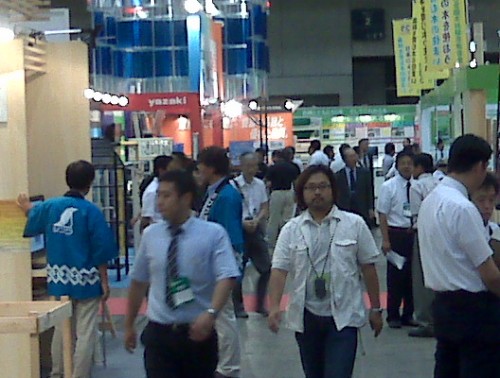
Trade shows all look the same. Not as many pony tails here however…
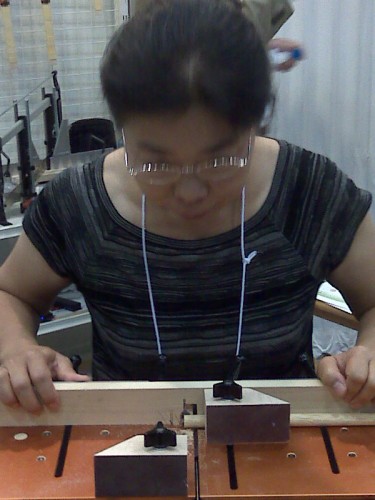
This lady could not cut dowel with her hand strength. She was so excited when I showed her how to use the clamps. She must have made a half-dozen passes, each drawing a big smile from the onlookers.
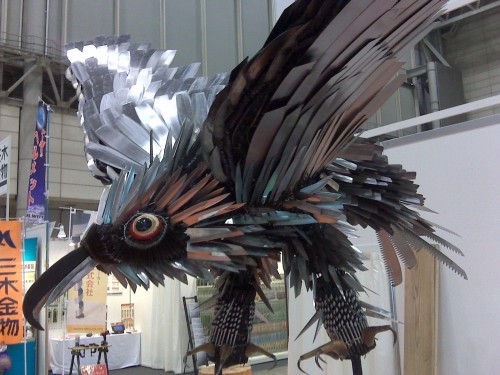
This creature caught my eye–it is made entirely of woodworking tools.Wingspan is close to 10 feet! The feathers are hand saw blades, the legs are auger bits and the face and face feathers are all knives. If this thing ever fell over on a cow…instant hamburger.
Rhetorical Question From Japan…
August, 27th, 2008
Have you ever awakened and found a raccoon in your bed?
I didn’t think so…this stuff only happens to me.
It’s a conceptional metaphor folks (raccoon:nocturnal carnivore in bed, John:Japanese toilet)–but these Japanese toilets are something else. I found a Rosetta Stone kiosk in the hotel mall and have had some luck translating the instructions for the 17 knobs and switches on my toilet. Notice I said “my toilet”? This is personal.
Keep in mind I don’t speak a stick of Japanese but one of my translations for the very last knob is…”grind”. Grind is a verb–what the hell is the subject? Never mind, the math is easy; “Grind” on any toilet means “homesick” in English.
The Jointmaker Pro is in the booth and tomorrow (which is really today in the US on account of the way time gets messed up when you fly great distances) is ready to go. So, I opted to try and check-in early at my hotel which is really late in the US, and stumbled upon another lesson in foreign culture.
My room is on the 44th floor of a hotel that overlooks a bay with guys fishing in boats. A great deal at $65.00/night if I could figure out my room key and/or I liked boats. Fortunately there was a female Japanese staff member in the hall and our conversation went something like this…
“Excuse me.” (Which I am sure translated means “YO mama!”)
I demonstrated without words that my key did not work. (There were more red lights on my door than in the streets of LA after the Lakers last NBA championship.)
She flipped the key over, pushed it in, the lights went green and the door opened!
You are probably thinking that I felt really stupid. However in order to feel that stupid, one must obviously not feel stupid, or moderately stupid at some point which of course is a stupid concept. So what did I do?
I took the palm of my hand and slapped my forehead–the universal signal of stupid according to the Three Stooges.
And then, in perfect English I was asked,
“Does your head feel OK?”
–John

